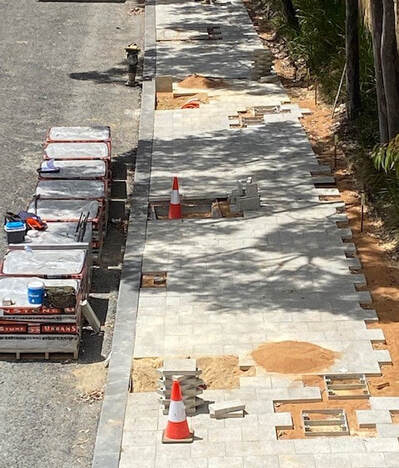"Failure to manage cashflow properly could lead to the demise of the company." Cashflow is the life blood of every construction company. Failure to manage cashflow properly could lead to the demise of the company. Last week in my article ‘Negative cash flow – the death for many construction companies’ I discussed how negative cash flow can destroy a company. This article explores this topic further and discusses what steps Company Managers and Project Managers can implement to improve cash flow. Case study 1: A few years ago I became involved in a project that had done ten million dollars’ worth of work on a cost recovery basis and yet had only invoiced for half a million dollars! Hard to believe! Not many construction companies can survive that amount of negative cashflow. To make matters worse none of the work had been signed off or agreed and many records were missing. It took months to find and agree the records and then invoice the work - (in all of this who knows what records were lost). Case study 2: Another project we built had a value of eight hundred thousand dollars. However, from the outset there were delays and scope changes. The value of the construction project soon doubled. Although we submitted our variation claims (change orders) timeously the client refused to acknowledge or pay them. After four months our costs were over one million six hundred thousand dollar and yet the client had only paid us eight hundred thousand dollars. Only when we proceeded down the legal path did the client eventually agree, settle and pay most of our claims. In this time our company had to finance this deficit which was a big drain on our cashflow which prevented us purchasing new construction equipment which we desperately needed for our other projects. Fortunately we did have the cash to cover the negative cashflow which could have destroyed many construction companies. "not invoicing for work done and not settling variation claims can quickly get a construction company into cashflow trouble." These examples illustrate how not invoicing for work done and not settling variation claims can quickly get a construction company into cashflow trouble. So what can we do to improve the cash flow on our construction projects? How to improve cashflow on construction projects Here are a few easy solutions that every construction project manager can take to improve cashflow for their construction project and company 1. Ensure that valuation claims are submitted on time, to the correct person, in the right format and with the required supporting documents. I’ve had many progress claims rejected because the format wasn’t as per the client’s requirements. It’s always a good idea at the start of the contract to clarify when the interim and final valuation claim must be submitted, to whom and in what format. 2. Make sure all work completed has been included and claimed. The person preparing the interim progress valuation or final valuation should be familiar with the construction project as well as the project documentation. The importance of maximising monthly valuations on your construction project 3. Submit and agree variation claims (change orders) as soon as possible so they can be included in the monthly progress valuations. Construction project variations – have you included all your costs? "Continually update the client on the expected final contract value" 4. If the value of the finished construction project is going to exceed the original project contract value ensure that the client has the funds to pay. Sometimes the client has to go through a long process to release additional funds for the project which could take months. I’ve worked for large reputable clients where it could take three or more months to release additional funds from within the organisation to pay the increased project costs. Three months when we weren’t paid. Continually update the client on the expected final contract value so if necessary they can take the required actions early. 5. Ensure that the client has issued proper site instructions and contract variations (change orders) for the additional works so there are no delays with payment. 6. Ensure payment milestones are fully achieved. Some projects are only paid when a milestone is achieved. If the milestone isn’t achieved – maybe because documentation hasn’t been submitted or testing completed there may be no payment forthcoming. The project team needs to understand their contract documentation and ensure they fulfil all obligations for the milestone to enable payment to be made. 7. Where payment is measured against the construction schedule ensure the schedule is updated correctly. Some projects pay in accordance with percentages complete on the project schedule. If the construction schedule isn’t updated correctly the contractor may end up under claiming their monthly valuation. The Good, the Bad, and the Ugly of Construction Project Schedules "I found that referring to this book was like having my own mentor on tap. Excellent." (Reader Amazon) Cashflow is critical for construction companiesNegative cashflow can bankrupt companies. It can certainly cause problems with paying subcontractors and suppliers. It could even impact you being paid on time. A construction company struggling to pay suppliers and subcontractors will make the life of a construction manager more difficult. It's important construction project managers ensure that there valuation claims are submitted on time and include all the completed work, with the supporting documentation. Project managers must take a keen interests in their project's finances. The construction project manager’s financial duties Read part 2 next week for more actions you can take to improve the cash flow on your project. How to improve cash flow on your projects - Part 2 #constructionfinance #constructionmanagement #contractorscashflow Other useful articles by the author include: What you need to know to close-out your construction project successfully Financial checks and controls on construction projects  (Paul Netscher is the author of the acclaimed books ‘Successful Construction Project Management: The Practical Guide’ [a required text for Bachelor of Construction Management at some universities] and ‘Building a Successful Construction Company: The Practical Guide’. Both books are available in paperback and e-book from Amazon and other retail outlets. This article is adapted from information included ‘Building a Successful Construction Company’. To find out more about how Paul Netscher can do for your company Read) "This book is fun to read and full of examples of what to be aware of with project management." (Reader on Amazon) © 2022 This article is not to be reproduced for commercial purposes without written permission from the author.
construction management construction project management
0 Comments
Leave a Reply. |
Archives
June 2024
Note: We welcome genuine comments, especially comments that add additional information to the subject matter in the article. We however reserve the right to remove inappropriate comments, which includes comments that have nothing to do with the subject, comments that include inappropriate language, and comments that are an advertisement for a product or company, or which include an advertising link. Comments must be in English. We will not enter into discussion on why a particular comment was removed.
CategoriesCopyright 2016 - The attached articles cannot be reproduced for commercial purposes without the consent of the author.
The opinions expressed in the attached articles are those of the writer. It should be noted that projects are varied and different laws and restrictions apply which depend on the location of the contractor and the project. It's important that the reader uses the supplied information taking cognisance of their particular circumstances. The writer assumes no responsibility or liability for any loss of any kind arising from the reader using the information or advice contained herein. "I have what I consider some of the best books on construction management."
Books are available from: Amazon.com Amazon.co.uk takealot.com kalahari.com Amazon.in Amazon.de Amazon.fr Amazon.it Amazon.com.au Powell's Fishpond uread bokus Amazon.ca Amazon.es Other retail stores Available in paperback or on Kindle "28 YEARS OF CONSTRUCTION PROJECT MANAGEMENT EXPERIENCE, DEVELOPING SUCCESSFUL CONSTRUCTION PROJECT MANAGERS AND BUILDING SUCCESSFUL CONSTRUCTION COMPANIES"
|






 RSS Feed
RSS Feed




